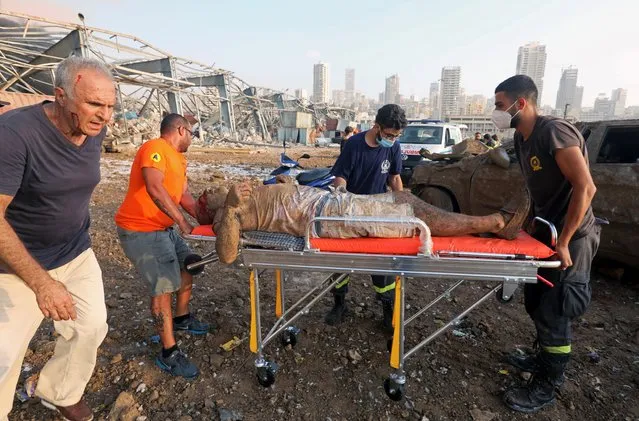
An injured man who was pinned under a vehicle following an explosion in Beirut's port area, is transported on a stretcher to hospital, in Beirut, Lebanon, August 4, 2020. (Photo by Mohamed Azakir/Reuters/File photo)
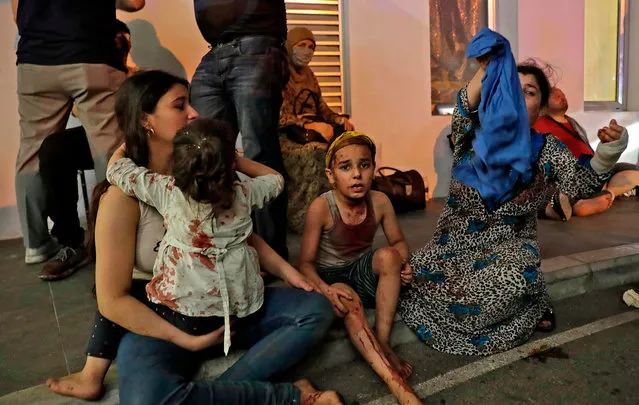
Wounded people wait to received help outside a hospital following an explosion in the Lebanese capital Beirut on August 4, 2020. Two huge explosion rocked the Lebanese capital Beirut, wounding dozens of people, shaking buildings and sending huge plumes of smoke billowing into the sky. Lebanese media carried images of people trapped under rubble, some bloodied, after the massive explosions, the cause of which was not immediately known. (Photo by Ibrahim Amro/AFP Photo)
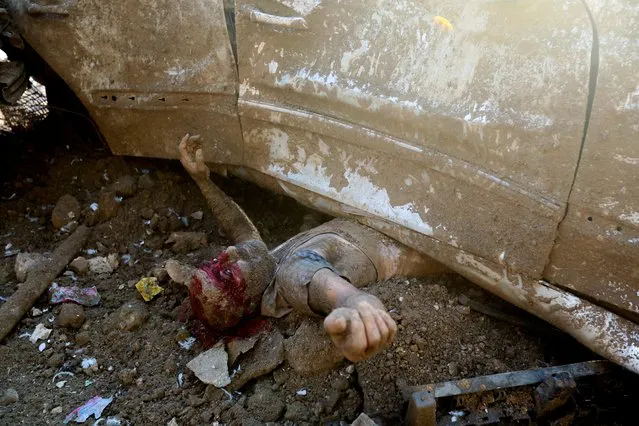
An injured man is pictured under a vehicle following an explosion in Beirut's port area, Lebanon on August 4, 2020. When Reuters photographer Mohamed Azakir saw a man pinned under a vehicle, covered in a thick film of rubble and blood, he thought the man was dead. But then the man opened his eyes and began waving his arms and asking for help. Azakir called over some rescuers who were nearby. In a series of photographs, he recorded the rescue of the man, while also helping the rescuers move the car to free him. (Photo by Mohamed Azakir/Reuters)
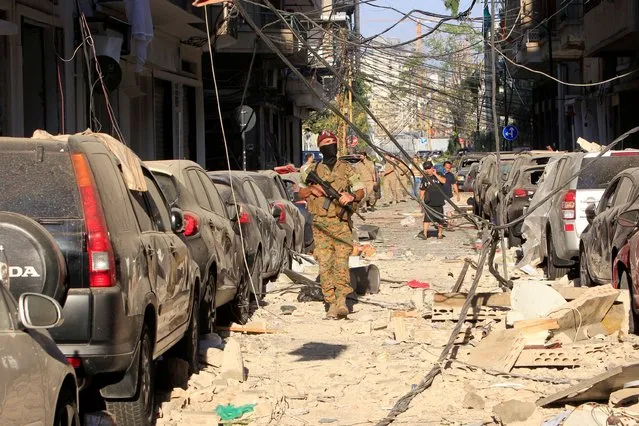
A member of security forces walks past the damage near the site of Tuesday's blast in Beirut's port area, Lebanon on August 5, 2020. (Photo by Aziz Taher/Reuters)
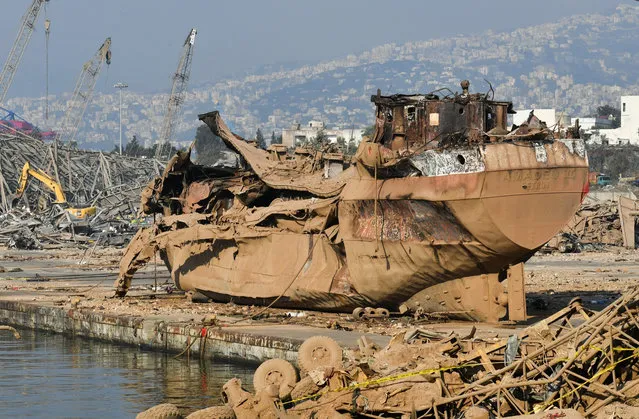
A picture shows a blown up ship which was thrown on the land at Beirut port on August 7, 2020, three days after a massive blast there shook the Lebanese capital. Rescuers combed through the rubble of Beirut port today in a search for survivors watched breathlessly by relatives of the missing, after an investigation. (Photo by Joseph Eid/AFP Photo)
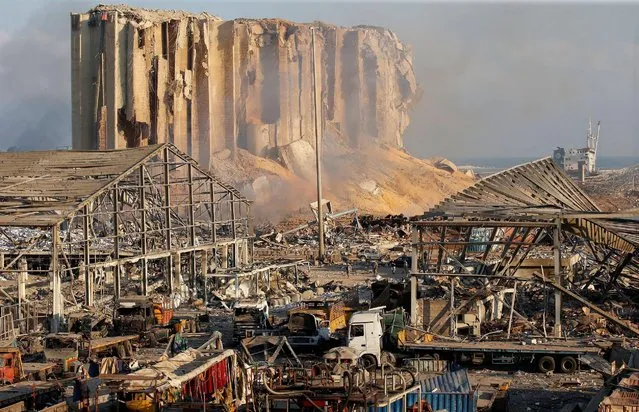
A general view shows the damage at the site of Tuesday's blast in Beirut's port area, Lebanon on August 5, 2020. (Photo by Mohamed Azakir/Reuters)
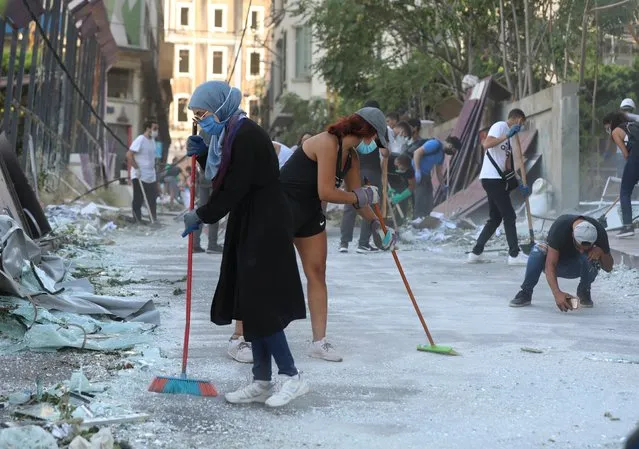
Volunteers clean the streets following Tuesday's blast in Beirut's port area, Lebanon on August 5, 2020. (Photo by Mohamed Azakir/Reuters)
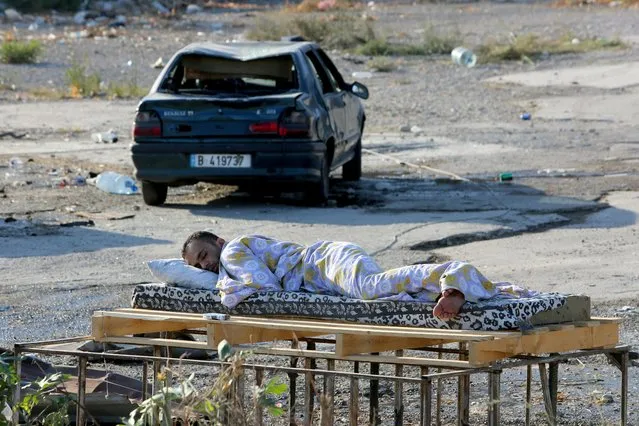
A man sleeps near a damaged car near the site of Tuesday's blast in Beirut's port area, Lebanon on August 6, 2020. (Photo by Aziz Taher/Reuters)
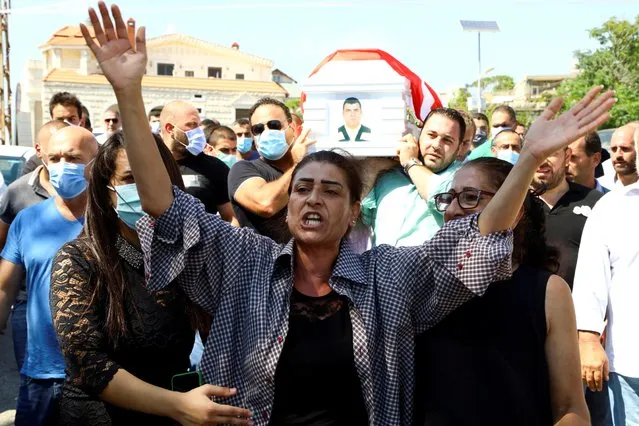
Sister of Corporal Gerges Deabes, who died as the result of Tuesday's blast in Beirut's port area, gestures during his funeral in Klayaa, Lebanon on August 6, 2020. (Photo by Karamallah Daher/Reuters)
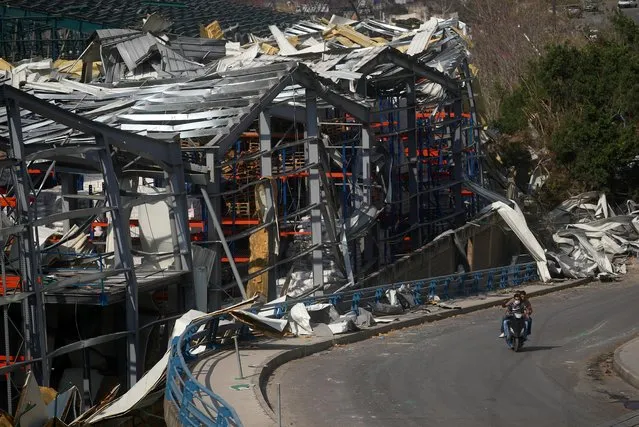
Men ride a motorcycle past the damage near the site of Tuesday's blast in Beirut's port area, Lebanon on August 7, 2020. (Photo by Hannah McKay/Reuters)
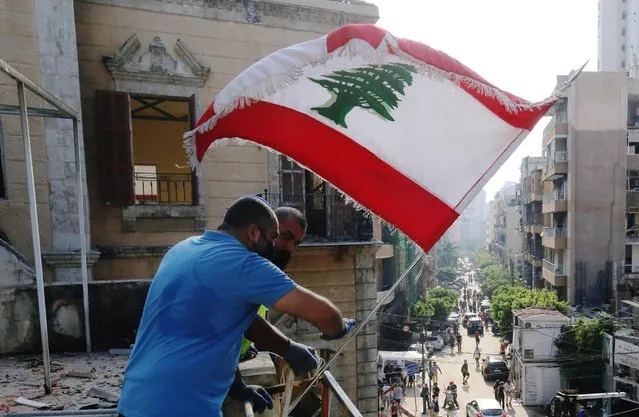
Men attach the Lebanese flag on a building following Tuesday's blast in Beirut's port area, in Beirut, Lebanon on August 7, 2020. (Photo by Aziz Taher/Reuters)
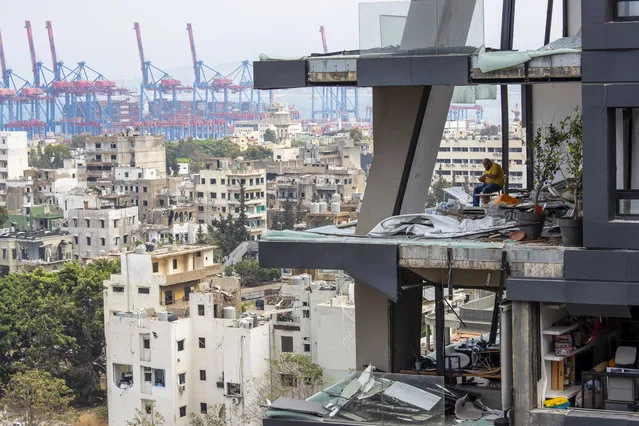
A man sits between debris inside his house damaged by Tuesday's explosion in the seaport of Beirut, Lebanon, Friday, August 7, 2020. The U.N. human rights office is calling for an independent investigation into the deadly explosion, insisting “victims' calls for accountability must be heard”. (Photo by Hassan Ammar/AP Photo)
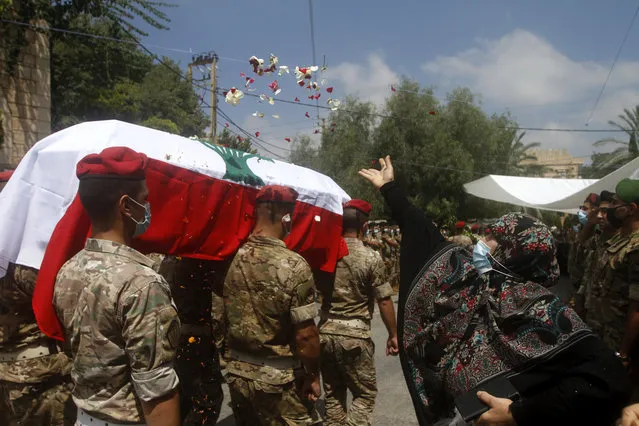
A woman throws flowers over Lebanese army soldiers who carry the coffin of lieutenant Ayman Noureddine, who was killed by Tuesday's explosion that hit the seaport of Beirut, during his funeral procession, in Numeiriyeh village, south Lebanon, Friday, August 7, 2020. Rescue teams were still searching the rubble of Beirut's port for bodies on Friday, nearly three days after a massive explosion sent a wave of destruction through Lebanon's capital. (Photo by Mohammed Zaatari/AP Photo)
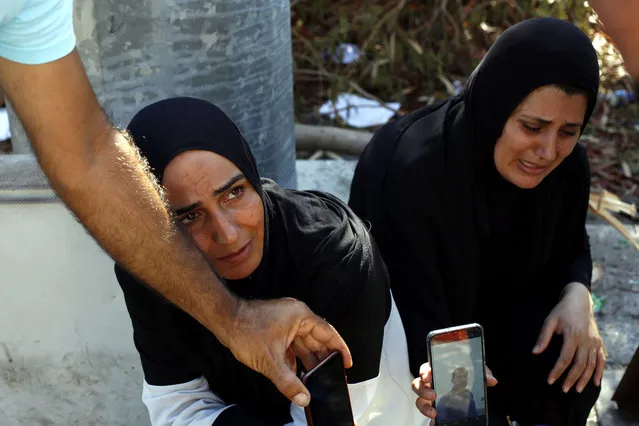
Zeinab Zer Eldin, left, and her sister-in-law shows a photo of her missing husband near the site of the explosion in the port of Beirut, Lebanon, Friday, August 7, 2020. Rescue teams were still searching the rubble of Beirut's port for bodies on Friday, nearly three days after a massive explosion sent a wave of destruction through Lebanon's capital, killing over a hundred people and wounding thousands. (Photo by Thibault Camus/AP Photo)
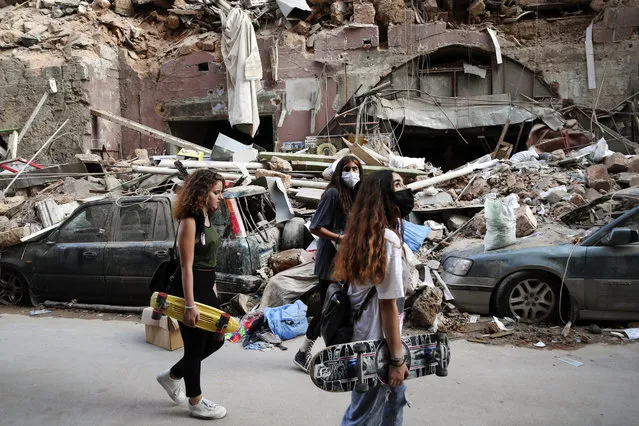
Women walk past destroyed cars at a neighborhood near the scene of Tuesday's explosion that hit the seaport of Beirut, Lebanon, Friday, August 7, 2020. Rescue teams were still searching the rubble of Beirut's port for bodies on Friday, nearly three days after a massive explosion sent a wave of destruction through Lebanon's capital. (Photo by Thibault Camus/AP Photo)
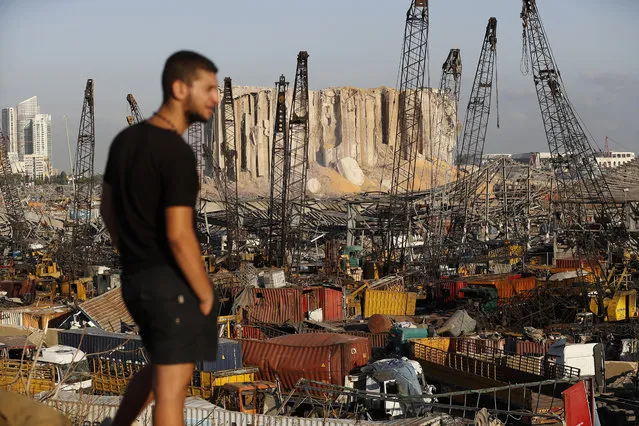
A man looks at the scene of Tuesday's explosion that hit the seaport of Beirut, Lebanon, Friday, August 7, 2020. Rescue teams were still searching the rubble of Beirut's port for bodies on Friday, nearly three days after a massive explosion sent a wave of destruction through Lebanon's capital. (Photo by Hussein Malla/AP Photo)
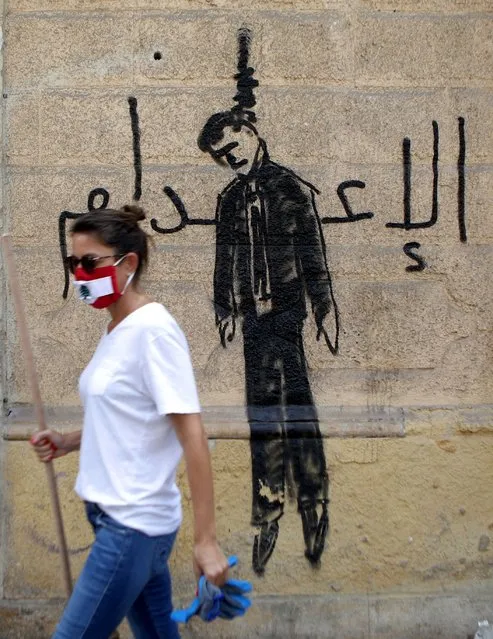
A member of the Lebanese civil society carrying a broom used for clearing debris, walks past a wall painting depicting a hanged politician and reading (death sentence in Arabic) in the partially damaged Beirut neighbourhood of Mar Mikhael on August 7, 2020. (Photo by Patrick Baz/AFP Photo)
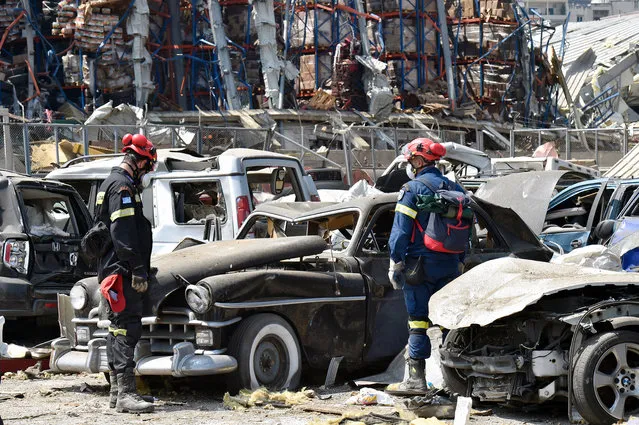
Greek rescue workers search amid the rubble three days after explosions that hit Beirut port, in Beirut, Lebanon, 07 August 2020. According to the Lebanese Health Ministry, at least 137 people were killed, and more than 5,000 injured in the blast believed to have been caused by an estimated 2,750 tons of ammonium nitrate stored in a warehouse. The explosion and its shockwave on 04 August 2020 devastated the port area. (Photo by Wael Hamzeh/EPA/EFE)
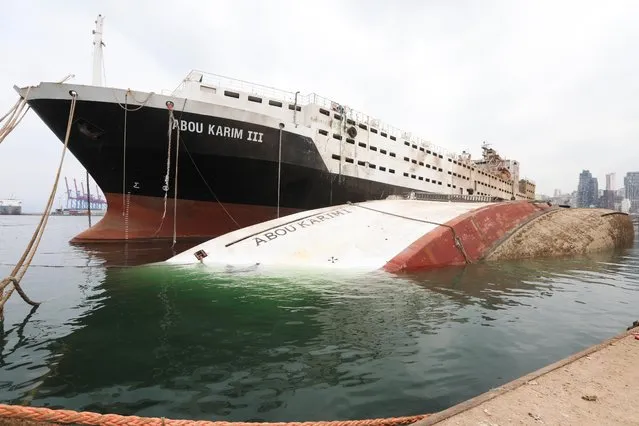
A view shows the damaged site of Tuesday's blast in Beirut's port area, Lebanon, August 7, 2020. (Photo by Mohamed Azakir/Reuters)
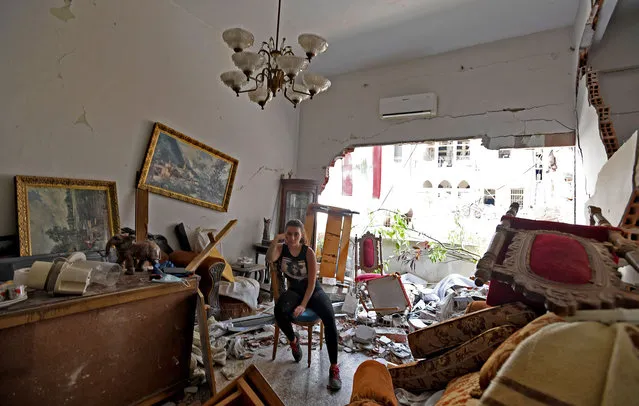
A woman sits amidst the rubble in her damaged house in the Lebanese capital Beirut on August 6, 2020, two days after a massive explosion shook the Lebanese capital. The blast, which appeared to have been caused by a fire igniting 2,750 tonnes of ammonium nitrate left unsecured in a warehouse, was felt as far away as Cyprus, some 150 miles (240 kilometres) to the northwest. The scale of the destruction was such that the Lebanese capital resembled the scene of an earthquake, with thousands of people left homeless and thousands more cramming into overwhelmed hospitals for treatment. (Photo by AFP Photo/Stringer)
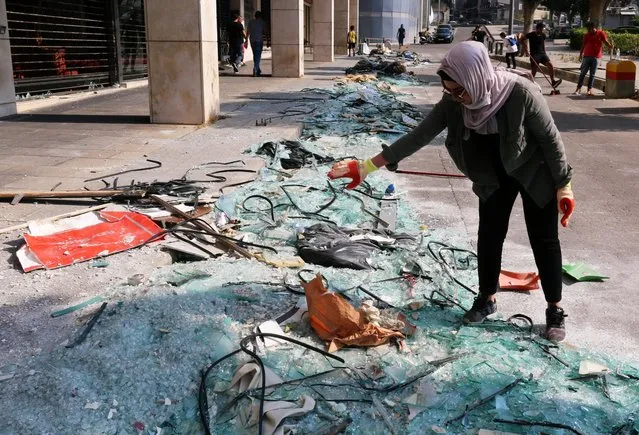
A woman stands near broken glass following Tuesday's blast in Beirut's port area, in Beirut, Lebanon on August 7, 2020. (Photo by Aziz Taher/Reuters)
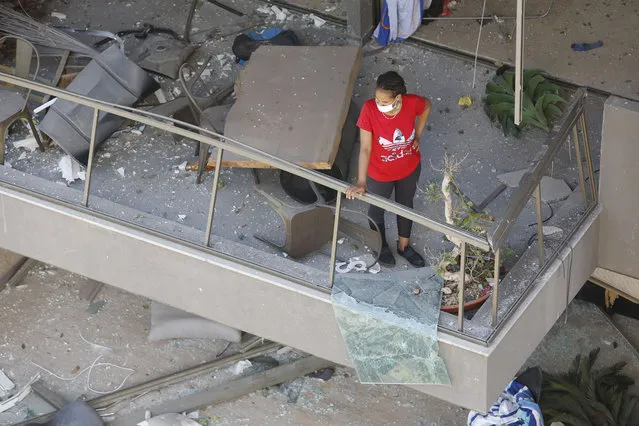
A woman looks down from a balcony, damaged by an explosion a day earlier, on August 5, 2020 in Beirut, Lebanon. As of Wednesday morning, more than 100 people were confirmed dead, with thousands injured, when an explosion rocked the Lebanese capital. Officials said a waterfront warehouse storing explosive materials, reportedly 2,700 tons of ammonium nitrate, was the cause of the blast. (Photo by Marwan Tahtah/Getty Images)
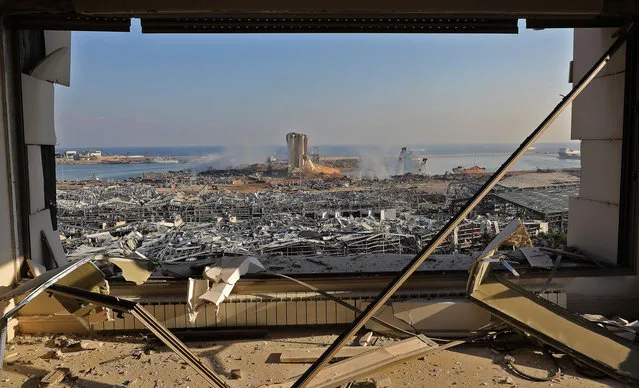
A view shows the aftermath of yesterday's blast at the port of Lebanon's capital Beirut, on August 5, 2020. Rescuers worked through the night after two enormous explosions ripped through Beirut's port, killing at least 78 people and injuring thousands, as they wrecked buildings across the Lebanese capital. (Photo by Anwar Amro/AFP Photo)
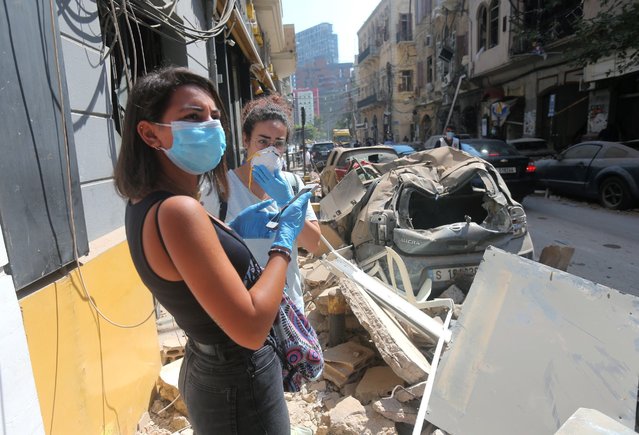
Young Lebanese women wearing protective masks and gloves against the coronavirus pandemic, stand on August 5, 2020 amid the rubble in Beirut's Gimmayzeh commercial district which was heavily damaged by the previous day's powerful explosion that tore through Lebanon's capital, resulting from the ignition of a huge depot of ammonium nitrate at the city's main port. Rescuers searched for survivors in Beirut after a cataclysmic explosion at the port sowed devastation across entire neighbourhoods, killing more than 100 people, wounding thousands and plunging Lebanon deeper into crisis. The blast, which appeared to have been caused by a fire igniting 2,750 tonnes of ammonium nitrate left unsecured in a warehouse, was felt as far away as Cyprus, some 150 miles (240 kilometres) to the northwest. (Photo by AFP Photo/Stringer)
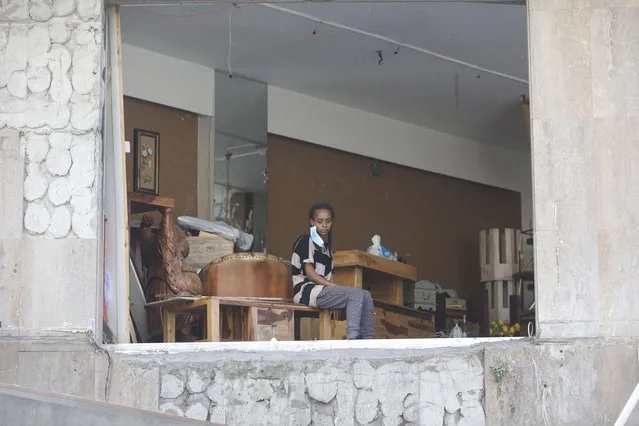
A woman looks out of the collapsed facade of an apartment, damaged by an explosion a day earlier, on August 5, 2020 in Beirut, Lebanon. As of Wednesday morning, more than 100 people were confirmed dead, with thousands injured, when an explosion rocked the Lebanese capital. Officials said a waterfront warehouse storing explosive materials, reportedly 2,700 tons of ammonium nitrate, was the cause of the blast. (Photo by Marwan Tahtah/Getty Images)
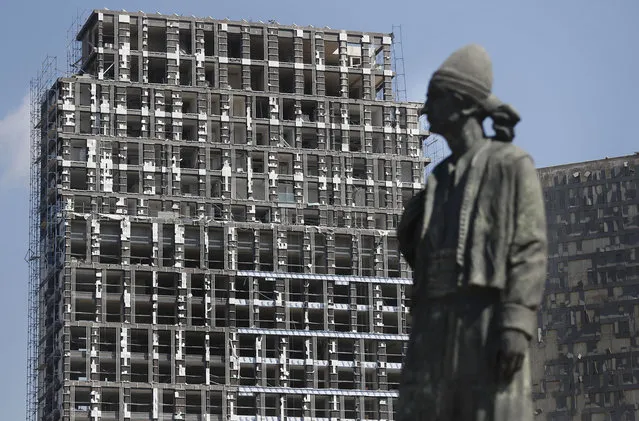
A statue representing the Lebanese expatriate is seen in front of a building that was damaged by an explosion that hit the seaport of Beirut, Lebanon, Wednesday, Aug. 5, 2020. Residents of Beirut confronted a scene of utter devastation on Wednesday, a day after a massive explosion at the port rippled across the Lebanese capital, killing at least 100 people, wounding thousands and leaving entire city blocks flooded with glass and rubble. (Photo by Hussein Malla/AP Photo)

Sandrine Zeinoun, 34, poses for a photograph inside her destroyed apartment after Tuesday's explosion in the seaport of Beirut, Lebanon, Thursday, August 6, 2020. The gigantic explosion in Beirut on Tuesday tore through homes, blowing off doors and windows, toppling cupboards, and sent flying books, shelves, lamps and everything else. Within a few tragic seconds, more than a quarter of a million people of the Lebanese capital's residents were left with homes unfit to live in. Around 6,200 buildings are estimated to be damaged. (Photo by Hassan Ammar/AP Photo)
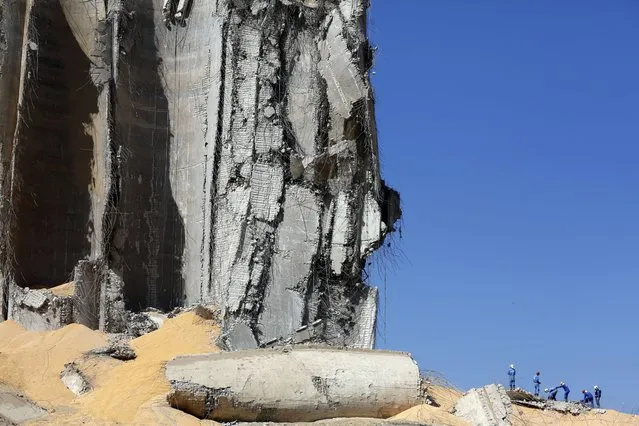
A Russian rescue team searches for victims on the scene of Tuesday's massive explosion in the port of Beirut, Lebanon, Friday, August 7, 2020. Rescue teams were still searching the rubble of Beirut's port for bodies on Friday, nearly three days after a massive explosion sent a wave of destruction through Lebanon's capital, killing over a hundred people and wounding thousands. (Photo by Thibault Camus/AP Photo)
10 Aug 2020 00:05:00,
post received
0 comments
